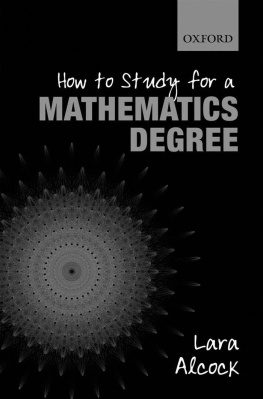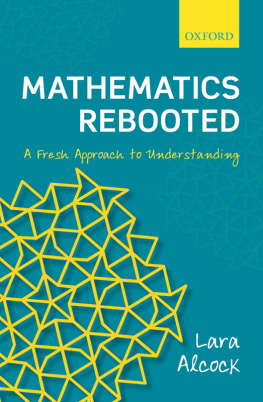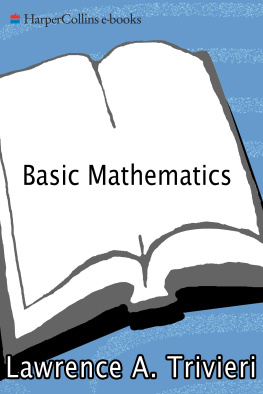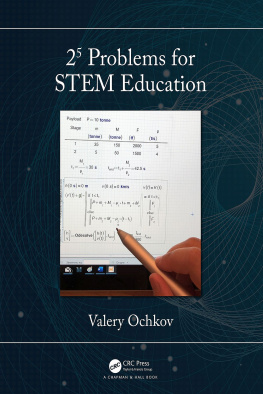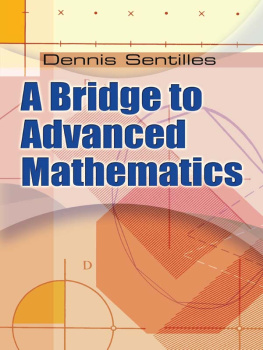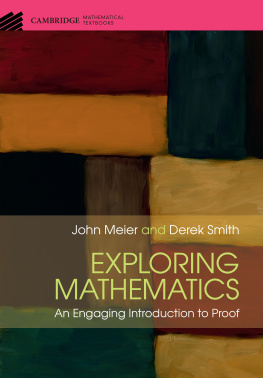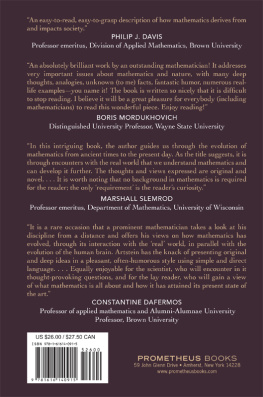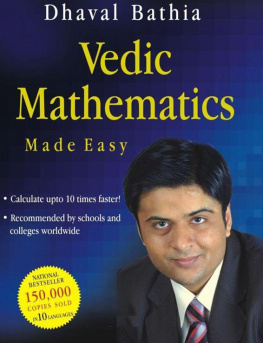HOW TO STUDY FOR A MATHEMATICS DEGREE
HOW TO STUDY FOR A MATHEMATICS DEGREE
LARA ALCOCK
Mathematics Education Centre, Loughborough University
Great Clarendon Street, Oxford, OX2 6DP,
United Kingdom
Oxford University Press is a department of the University of Oxford.
It furthers the Universitys objective of excellence in research, scholarship, and education by publishing worldwide. Oxford is a registered trade mark of Oxford University Press in the UK and in certain other countries
Lara Alcock 2013
The moral rights of the author have been asserted
First Edition published in 2013
Impression: 1
All rights reserved. No part of this publication may be reproduced, stored in a retrieval system, or transmitted, in any form or by any means, without the prior permission in writing of Oxford University Press, or as expressly permitted by law, by licence or under terms agreed with the appropriate reprographics rights organization. Enquiries concerning reproduction outside the scope of the above should be sent to the Rights Department, Oxford University Press, at the address above
You must not circulate this work in any other form and you must impose this same condition on any acquirer
British Library Cataloguing in Publication Data
Data available
Library of Congress Cataloging in Publication Data
Library of Congress Control Number: 2012940939
ISBN 9780199661329
Printed in Great Britain by
Clays Ltd, St Ives plc
Links to third party websites are provided by Oxford in good faith and for information only. Oxford disclaims any responsibility for the materials contained in any third party website referenced in this work.
PREFACE
E very year, thousands of students go to university to study for single-or joint-honours mathematics degrees. Many of these students are extremely intelligent and hardworking. However, even the best struggle with the demands of making the transition to advanced mathematics. Some struggles are down to adjusting to independent study and to learning from lectures. Others, however, are more fundamental: the mathematics shifts in focus from calculation to proof, and students are thus expected to interact with it in different ways. These changes need not be mysteriousmathematics education research has revealed many insights into the adjustments that are necessarybut they are not obvious and they do need explaining.
This book aims to offer such explanation for a student audience, and it differs from those already aimed at similar audiences. It is not a popular mathematics book; it is less focused on mathematical curiosities or applications, and more focused on how to engage with academic content. It is not a generic study skills guide; it is focused on the challenges of coping with formal, abstract undergraduate mathematics. Most importantly, it is not a textbook. Many transition or bridging or foundations textbooks exist already and, while these do a good job of introducing new mathematical content and providing exercises for the reader, my view is that they still assume too much knowledge regarding the workings and values of abstract mathematics; a student who expects mathematics to come in the form of procedures to copy will not know how to interact with material presented via definitions, theorems and proofs. Indeed, research shows that such a student will likely ignore much of the explanatory text and focus disproportionately on the obviously symbolic parts and the exercises. This book aims to head off such problems by starting where the student is; it acknowledges existing skills, points out common experiences and expectations, and re-orients students so that they know what to look for in texts and lectures on abstract mathematics. It could thus be considered a universal prelude to undergraduate textbooks in general and to standard transition textbooks in particular.
Because this book is aimed at students, it is written in the style of a friendly, readable (though challenging and thought-provoking) self-help book. This means that mathematicians and other mathematics teachers will find the style considerably more narrative and conversational than is usual in mathematics books. In particular, they might find that some technical details that they would emphasize are glossed over when concepts are first introduced. I made a deliberate decision to take this approach, in order to avoid getting bogged down in detail at an early stage and to keep the focus on the large-scale changes that are needed for successful interpretation of undergraduate mathematics. Technical matters such as precise specification of set membership, of function domains, and so on are pointed out in footnotes and/or separated out for detailed discussion in the later chapters of .
To lead students to further consideration of such points, and to avoid replicating material that is laid down well elsewhere, I have included a further reading section at the end of each chapter. These lists of readings aim to be directive rather than exhaustive, and I hope that any student who is interested in mathematics will read widely from such material and thus benefit from the insights offered by a variety of experts.
This book would not have been possible without the investigations reported by the many researchers whose works appear in the references. My sincere thanks also to Keith Mansfield, Clare Charles and Viki Mortimer at Oxford University Press, to the reviewers of the original book proposal, and to the following colleagues, friends and students who were kind enough to give detailed and thoughtful feedback on earlier versions of this work: Nina Attridge, Thomas Bartsch, Gavin Brown, Lucy Cragg, Anthony Croft, Ant Edwards, Rob Howe, Matthew Inglis, Ian Jones, Anthony Kay, Nathalie Matthews, David Sirl, and Jack Tabeart. Thanks in particular to Matthew, who knew that I was intending to write and who gave me related books for my birthday in a successful attempt to get me started.
Finally, this book is dedicated to my teacher George Sutcliff, who allowed me to find out how well I could think.
CONTENTS
SYMBOLS
Symbol | Meaning | Section |
the set of all natural numbers | 2.3 |
the set of all integers | 2.3 |
the set of all rational numbers | 2.3 |
the set of all real numbers | 2.3 |
the set of all complex numbers | 2.3 |
is an element of | 2.3 |
is a subset of | 2.3 |
phi (Greek letter often used for a transformation) | 2.4 |
| the set of all 4-component vectors | 2.4 |
f: | function f from to | 3.6 |
: U V | transformation from the set U to the set V | 4.4 |
implies | 4.5 |
is equivalent to (or if and only if) | 4.5 |
for all | 4.7 |
there exists | 4.7 |
is not an element of | 6.3 |
sigma (Greek letter used for a sum) | 6.4 |
the empty set | 8.4 |
[a, b] | closed interval |
Next page
